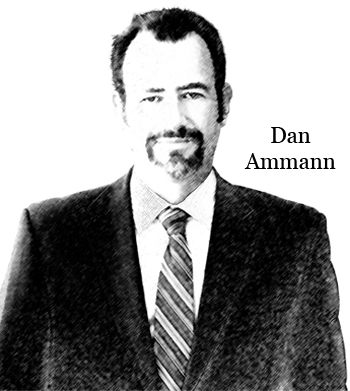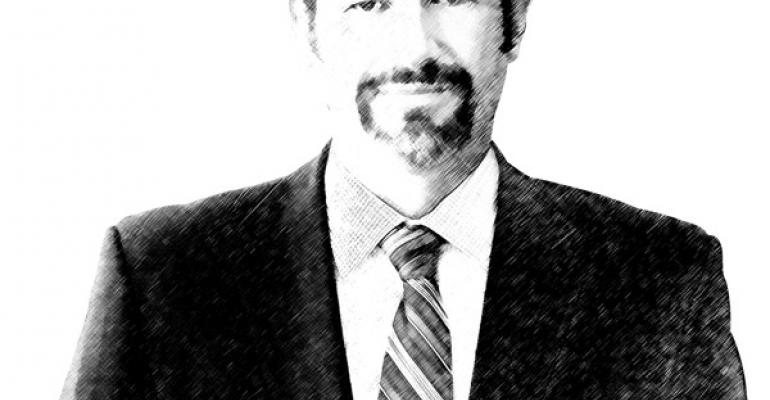Dan Ammann was named senior vice president and chief financial officer at General Motors in April 2011, with responsibility for the auto maker’s global finance operations and its GM Financial captive financing business. He now also serves on the Opel Supervisory Board.
Ammann, 41, joined GM in 2010 as vice president-finance and treasurer from Morgan Stanley, where over an 11-year career he rose to managing director and head of Industrial Investment Banking. The tenure saw the executive take on a number of high-profile assignments, including advising GM on its 2009 bankruptcy and subsequent restructuring. He also worked at Credit Suisse in New York and his native New Zealand.
Ammann has played pivotal roles in crafting Opel’s path back to profitability, targeted for mid-decade, and last year led execution of an historic $26 billion reduction to GM’s U.S. salaried pension obligation. His team also has created a “fortress balance sheet” designed to fortify GM’s finances against a future global economic crisis.
A certified industry pool test driver on the Nürburgring Nordschleife racetrack in Germany, Ammann currently splits time between driving his Cadillac ATS, Chevrolet Camaro ZL1 and a restored ’61 Cadillac Series 62 Convertible. Ammann talks with WardsAuto about his decision to join GM and his work internally to more closely link GM’s finance organization to the everyday business:
 I joined Morgan Stanley in 1999 and fairly soon after I got involved with the General Motors account. Morgan Stanley was one of the key financial advisors to GM, so I worked on a number of different transactions over the years for GM, culminating in being one of the lead financial advisors on the (2009) bankruptcy and the restructuring. I had a front-row seat to what went on during that timeframe and was closely involved. I obviously wanted to continue being involved, given everything I had done historically.
I joined Morgan Stanley in 1999 and fairly soon after I got involved with the General Motors account. Morgan Stanley was one of the key financial advisors to GM, so I worked on a number of different transactions over the years for GM, culminating in being one of the lead financial advisors on the (2009) bankruptcy and the restructuring. I had a front-row seat to what went on during that timeframe and was closely involved. I obviously wanted to continue being involved, given everything I had done historically.
At that time two people showed up at GM that I had prior history with, one being a good friend (GM Vice Chairman) Steve Girsky, a (former) colleague of mine at Morgan Stanley, and (fellow Kiwi) Chris Liddell, my predecessor in this role and someone I’d known for 20 years.
Being an enterprising banker, I called those guys up and said, ‘How can I help? You guys have a lot of things to do here.’ And they basically said, ‘Why don’t you come help from the inside instead of the outside.’ I thought about that for a fairly short period of time (laughs), and I couldn’t think of anything more interesting and challenging to get in the middle of, so I jumped at the opportunity.
I joined the company as treasurer in early 2010 and then about a year later Liddell left. They offered me this role and I had an even shorter thought process: ‘How can I not take (it) up?’ I can’t think of anything more interesting to do than to be in the middle of this (restructuring).
Remember this was early 2010, so it wasn’t clear how it was going to work out. But you also reach a point in your career where it is time for something different, and it was clear to me this was not the kind of opportunity that comes along every now and then. We used to say in the M&A business, ‘You can’t control the timing of deals. They just pop up.’
This was one of those instances. It was either grab it with both hands or not, and what I found as I’ve made decisions to move from New Zealand to New York and from (Credit Suisse) First Boston to Morgan Stanley and now to GM was, ‘What if I don’t do it? I’ll always wonder what could have happened.’ It was just too big of an opportunity.
It was the right time for me to take a chance on something. If you think of the ingredients, this was a company I’d had at least a peripheral involvement and a reasonable understanding of where it was and what the issues were – at least I felt I did at the time. You never really know until you get inside, but in my banking career I was always drawn to complicated, challenging situations. The kinds of projects I’ve worked on have typically been big and complicated and this really fit that natural interest and inclination. So right time, right place, right opportunity. Like I said, I didn’t need to think about it very long.
I think the (role of GM finance) is different today. It is much more involved in the business: designing, building and selling cars. And what I mean by that is the role the financial organization plays in driving the business, in providing the organization with the right tools to make the right business decisions. One thing I talk about internally is we have a lot of data inside GM, but data is not a lot of use to people. We need to turn the data into information and then we need to take that information and turn it into insights.
It’s those insights that are useful for driving the business and making better decisions. We have deployed simple financial metrics to allow our chief engineers to make trade-offs in product programs. We’ve provided much more visibility on product line profitability and on country-by-country profitability, so that people will understand very clearly where we make money, where we don’t and why.
So it’s all about giving people the right tools, adding value to the business-decision process and taking the complicated and making it easy to understand. That has been a major thrust of what we as a financial organization have been driving towards.
And I think another dimension, which is closely related, goes back to why I joined GM. I’ve always been interested in this business. I’ve always been interested in cars. And from a finance point of view, I’ve always believed the more interest we show in the business, the more interest the business will show in what we are trying to do.
That, from my perspective at least, has really played out. I spend a lot of time at the Tech Center. I spend a lot of time in product development. I spend a lot of time with engineers. I try to understand what they are doing, because the better I understand the challenges and constraints they are operating with the more chance we have as a finance organization to provide them with the tools they need to perform the job.
By helping simplify the picture and making the complicated easy to understand and giving people the right tools that enable them to do their job better, that’s at the core of what we do.





